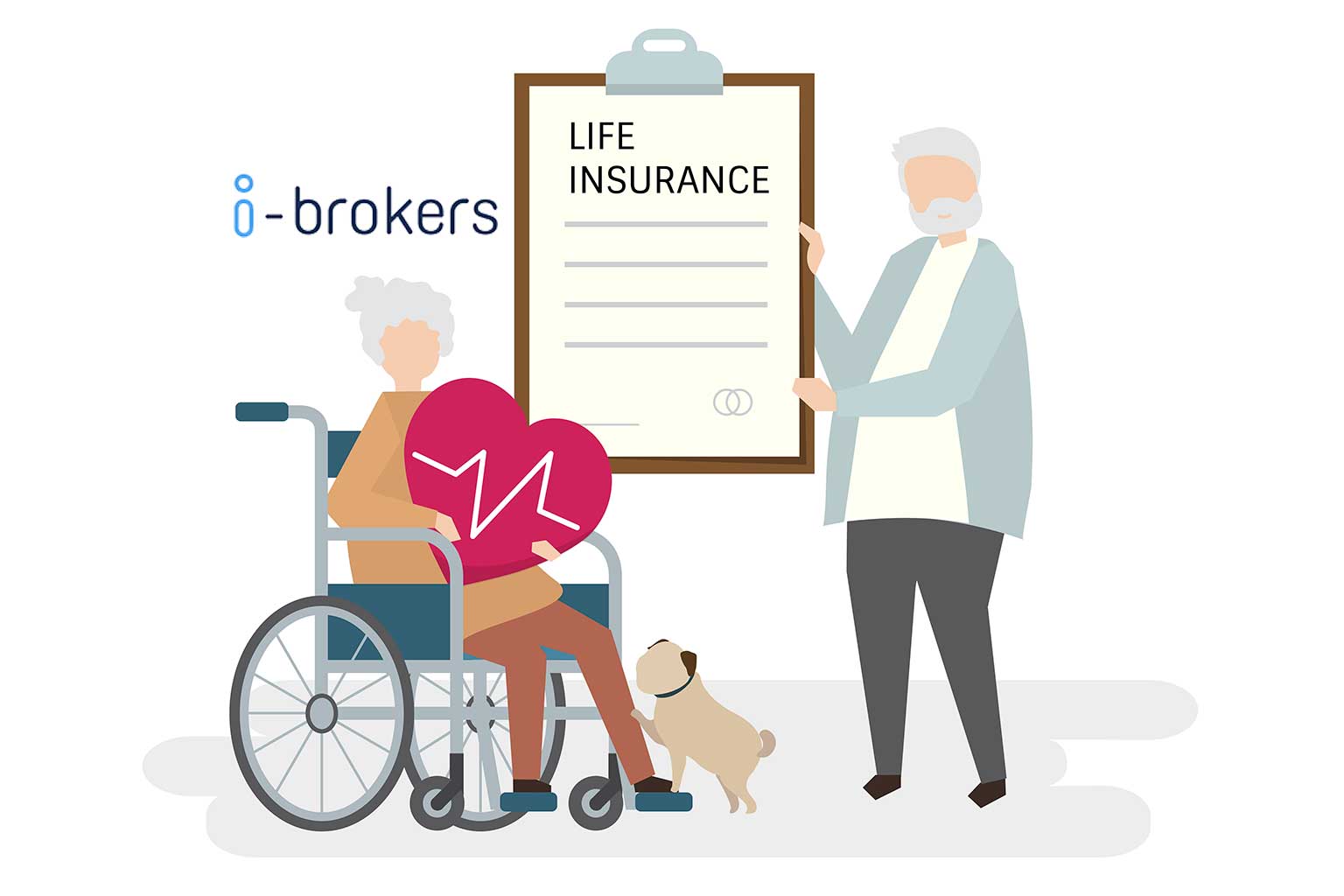

Finance
What Is Level-Funded Health Insurance?
Published: October 30, 2023
Learn about level-funded health insurance and how it can benefit your finances. Explore the advantages of this cost-effective insurance option.
(Many of the links in this article redirect to a specific reviewed product. Your purchase of these products through affiliate links helps to generate commission for LiveWell, at no extra cost. Learn more)
Table of Contents
Introduction
Health insurance is an essential component of our financial well-being, providing coverage for medical expenses and ensuring peace of mind. However, navigating the complex world of health insurance options can be overwhelming, especially when faced with terms like “level-funded health insurance.” If you’re unsure about what level-funded health insurance entails and whether it’s the right choice for you, this article is here to provide clarity.
Level-funded health insurance is a unique and innovative approach that brings together the benefits of self-funded and fully-insured plans. It is especially popular among small to mid-sized businesses that are looking for cost-effective ways to provide comprehensive healthcare coverage to their employees.
By understanding how level-funded health insurance works, its benefits, drawbacks, and its suitability for your specific needs, you can make an informed decision when it comes to your health insurance options.
In this comprehensive guide, we will explore the intricacies of level-funded health insurance, offering you insights and guidance to help you navigate the process. From the basics of understanding level-funded health insurance to evaluating its pros and cons, we will equip you with the knowledge necessary to determine whether it aligns with your unique circumstances and requirements.
Let’s dive into the world of level-funded health insurance and explore how it can potentially revolutionize the way you approach healthcare coverage for yourself, your family, or your employees.
Understanding Level-Funded Health Insurance
Level-funded health insurance is a hybrid form of health insurance that combines the advantages of traditional fully-insured plans with the cost-saving potential of self-funded plans. It is a popular option for businesses looking for alternatives to traditional health insurance plans.
In a level-funded health insurance plan, the employer pays a fixed premium each month to an insurance carrier. This premium is calculated based on the expected healthcare expenses of the employees, as well as an administrative fee. The insurance carrier then handles the claims and administration of the plan.
However, what sets level-funded health insurance apart is the concept of a “claims fund” or “stop-loss” agreement. This mechanism allows businesses to have more control over their healthcare costs. The claims fund is funded by a portion of the monthly premium. It acts as a reserve to cover expected claims. If the actual claims are lower than anticipated, the excess funds in the claims fund can be returned to the employer or used to offset future premiums.
Level-funded health insurance plans are regulated by the Employee Retirement Income Security Act (ERISA), which provides certain consumer protections and guidelines for employers offering self-funded health plans.
It’s important to note that level-funded health insurance plans may have different eligibility requirements, contribution strategies, and network options than traditional fully-insured plans. Employers should carefully evaluate the plan details and consult with their insurance broker or consultant to ensure it aligns with their specific needs and goals.
Overall, level-funded health insurance provides businesses with the opportunity to have more control over their healthcare costs while still benefiting from the stability and coverage provided by an insurance carrier. By understanding the intricacies of level-funded health insurance, businesses can make an informed decision about whether it’s the right fit for their organization.
How Does Level-Funded Health Insurance Work?
Now that we have a basic understanding of level-funded health insurance, let’s delve into how it works in more detail.
In a level-funded health insurance plan, the employer pays a fixed monthly premium to an insurance carrier. This premium includes two components: a claims fund and an administrative fee. The claims fund is used to cover the expected healthcare expenses of the employees, while the administrative fee covers the administrative costs of the insurance carrier.
The insurance carrier is responsible for handling the payment of claims and the administration of the plan. This means that employers do not have to deal with the day-to-day management of claims or the financial risk of large medical expenses.
However, what sets level-funded health insurance apart is the agreement between the employer and the insurance carrier regarding the claims fund. This agreement typically includes two components: a specific stop-loss and an aggregate stop-loss.
The specific stop-loss sets a threshold for each individual employee’s claims. Once the claims for an employee reach this threshold, the insurance carrier will cover the remaining expenses for that individual for the plan year.
The aggregate stop-loss, on the other hand, sets a threshold for the total claims of the entire employee population. If the total claims for the plan year exceed this threshold, the insurance carrier will cover the excess amount.
It’s important to note that the claims fund is not the same as traditional self-funded plans, where the employer assumes all financial risk for employees’ healthcare expenses. In a level-funded plan, the employer only assumes the risk up to the specific and aggregate stop-loss thresholds agreed upon with the insurance carrier.
If the actual claims are lower than expected and there are unused funds in the claims fund at the end of the plan year, the employer may be eligible to receive a refund or use the surplus to offset future premiums.
By offering level-funded health insurance, employers have more predictability and control over their healthcare costs. Additionally, employees can benefit from the stable coverage and network options provided by the insurance carrier.
It’s crucial for employers to evaluate the specific details of level-funded health insurance plans, including stop-loss thresholds, network options, and administrative fees, to ensure they align with their budget and the needs of their employees.
Now that we have explored how level-funded health insurance works, let’s delve into the benefits it offers.
Benefits of Level-Funded Health Insurance
Level-funded health insurance offers several key benefits for both employers and employees. Let’s take a closer look at some of the advantages of this type of coverage.
Cost Savings: One of the primary benefits of level-funded health insurance is the potential for cost savings. Unlike traditional fully-insured plans, where premiums are fixed and not reflective of the actual claims experience, level-funded plans allow employers to pay a more accurate premium based on the expected healthcare expenses of their employees. If the actual claims are lower than anticipated, employers may receive a refund or use the excess funds to offset future premiums.
Financial Predictability: Level-funded plans provide employers with more control and predictability over their healthcare costs. With a defined claims fund and stop-loss thresholds, employers can budget for their healthcare expenses more accurately. This stability helps to minimize unexpected financial burdens and allows for better financial planning.
Customizable Benefits: Another advantage of level-funded health insurance is the flexibility it offers in designing benefit packages. Employers have the opportunity to tailor the plan to meet the specific needs of their employees and their organization. This means they can choose from a range of coverage options, deductibles, and network choices, providing employees with more personalized and suitable healthcare benefits.
Access to Provider Networks: Level-funded plans often provide access to established provider networks. This means that employees can benefit from a wide range of healthcare facilities and providers. These networks are usually well-negotiated, ensuring more favorable rates for services that can help reduce overall healthcare costs.
Employee Wellness Programs: Many level-funded health insurance plans offer additional features such as wellness programs and resources to support employee well-being. Employers can take advantage of these programs to promote a healthy workforce, reduce medical expenses, and improve overall productivity and employee satisfaction.
Claims Data Transparency: Level-funded plans provide employers with access to detailed claims data. This valuable information allows employers to analyze healthcare trends within their organization, identify areas for improvement, and implement targeted strategies to better manage and control healthcare costs.
It is important to note that the benefits of level-funded health insurance may vary depending on the specific plan and insurance carrier. Employers should carefully evaluate the options available to them and consult with an insurance broker or consultant to determine the best fit for their organization.
Now that we have explored the benefits of level-funded health insurance, let’s move on to discussing some of the potential drawbacks.
Drawbacks of Level-Funded Health Insurance
While level-funded health insurance offers many advantages, it’s important to consider the potential drawbacks before making a decision. Let’s explore some of the potential disadvantages of this type of coverage.
Financial Risk: Although level-funded plans provide employers with more control over their healthcare costs, they still entail a level of financial risk. While the stop-loss thresholds protect employers to a certain extent, there is still a possibility that claims could exceed those thresholds, resulting in unexpected financial burdens.
Smaller Employer Limitations: Level-funded health insurance plans may not be available or viable options for smaller employers. These plans are typically designed for businesses with a minimum number of employees, making it potentially inaccessible for small businesses that do not meet the criteria.
Limited Network Options: While level-funded plans may offer access to established provider networks, the network options available could be more limited compared to traditional fully-insured plans. This may restrict employees’ choice of healthcare providers and facilities, which can be a drawback for those who have established relationships with specific doctors or hospitals.
Administrative Responsibility: Although the insurance carrier handles most of the administrative duties of the plan, employers may still have additional administrative responsibilities compared to fully-insured plans. This includes managing employee enrollment, communicating plan details, and handling any issues or inquiries that arise.
Variability of Refunds: While the potential for receiving refunds from unused claims funds is seen as a benefit, the actual amount and frequency of refunds can vary. It’s important for employers to understand the refund policies of the specific level-funded plan they are considering to manage expectations and budget accordingly.
Accountability for Claims Fund Management: Employers must carefully manage the claims fund to ensure it remains adequately funded to cover the anticipated healthcare costs. Failure to properly manage the claims fund can lead to higher-than-expected claims expenses or insufficient funds to cover the actual claims.
When considering level-funded health insurance, it is crucial to thoroughly evaluate the specific plan details, consult with insurance professionals, and assess the suitability for your organization in terms of financial risk tolerance, employee needs, and administrative capabilities.
Now that we’ve discussed the potential drawbacks of level-funded health insurance, let’s determine whether it’s the right choice for you.
Is Level-Funded Health Insurance Right for You?
Deciding whether level-funded health insurance is the right choice for you or your organization requires careful consideration and evaluation of various factors. Here are some key points to help you determine its suitability:
Size of the Organization: Level-funded health insurance plans are typically more suitable for mid-sized to larger businesses. Smaller employers may not have the necessary employee population to make level funding financially viable.
Financial Stability: Assess your organization’s ability to assume some level of financial risk. While level-funded plans have stop-loss thresholds to limit exposure, employers still bear a degree of financial responsibility. Ensure your organization has the financial stability to manage potential fluctuations in healthcare costs.
Claims History: Analyze your organization’s claims history and healthcare utilization patterns. Level-funded plans can be beneficial if your claims experience is stable and predictable. If your claims history is volatile or consistently high, fully-insured plans may be a more appropriate choice.
Employee Needs: Consider the healthcare needs and preferences of your employees. Assess whether the available network options, coverage levels, and customization options meet the needs of your workforce.
Administrative Capacity: Evaluate your organization’s administrative capabilities. While the insurance carrier handles most administrative tasks, employers still have certain responsibilities, including managing enrollment and communicating plan details. Ensure your organization has the resources and expertise to fulfill these obligations.
Long-Term Strategy: Consider your organization’s long-term goals and strategy. Level-funded health insurance can offer stability and savings over time, but it requires a commitment to managing the claims fund effectively and a willingness to navigate potential fluctuations in healthcare costs.
Ultimately, the decision to opt for level-funded health insurance should be based on a thorough assessment of your organization’s specific needs, goals, and resources. It’s recommended to consult with insurance brokers or consultants who specialize in level-funded plans to gain insights and guidance tailored to your circumstances.
By carefully evaluating these factors and seeking expert advice, you can determine whether level-funded health insurance is the right fit for you or your organization.
Now, let’s conclude our discussion on level-funded health insurance.
Conclusion
Level-funded health insurance is an innovative and cost-effective approach that offers a middle ground between fully-insured and self-funded plans. It provides employers with the potential for cost savings, financial predictability, and customizable benefits while maintaining access to established provider networks.
By understanding how level-funded health insurance works, its benefits, drawbacks, and its suitability for your organization, you can make an informed decision when it comes to your healthcare coverage options.
Before opting for level-funded health insurance, it’s important to consider factors such as the size of your organization, financial stability, claims history, and administrative capacity. Assessing these elements will help you determine whether level-funded health insurance aligns with your organization’s needs and goals.
Remember, level-funded health insurance may not be suitable for every organization. Smaller employers, those with inconsistent claims history, or limited administrative resources may find fully-insured plans to be a better fit. It’s essential to consult with insurance professionals and thoroughly evaluate the available options before making a decision.
Overall, level-funded health insurance offers a unique opportunity to control healthcare costs, tailor benefit packages, and provide stability for employers and employees alike.
Armed with the information provided in this guide, you can navigate the complexities of level-funded health insurance and make a well-informed choice about whether it’s the right choice for you or your organization.
Now it’s time to take the next step in your healthcare coverage journey and explore the options available to you.














